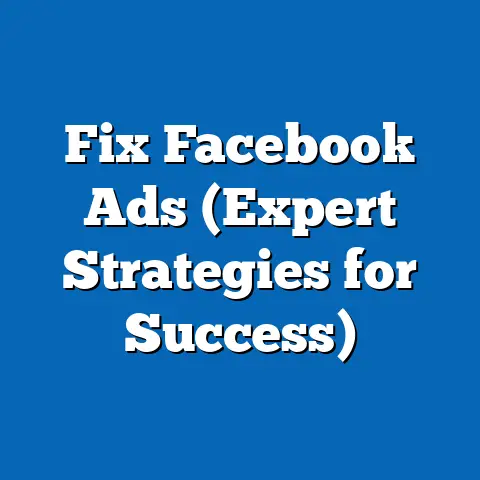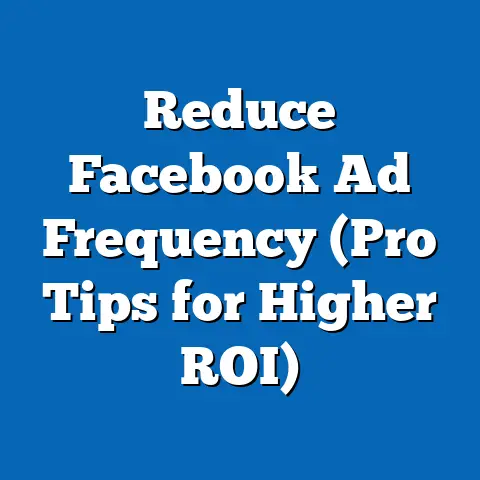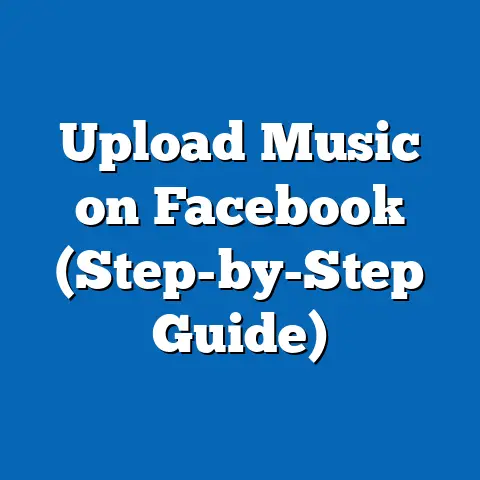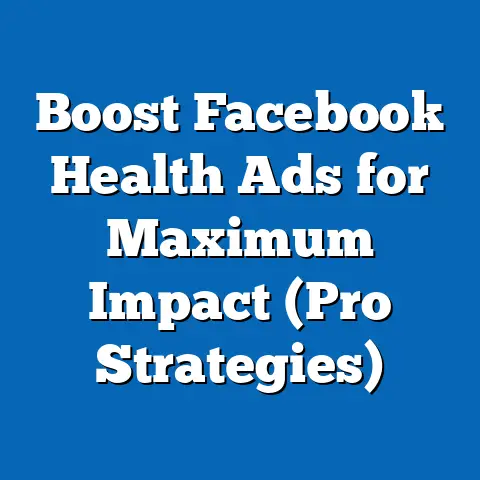Boost Sales with Facebook Pants Ads (Expert Strategies)
Whether you’re a small business owner, an e-commerce entrepreneur, or a marketing professional, understanding how to leverage Facebook’s advertising ecosystem can transform your sales strategy. With over 2.9 billion monthly active users as of 2023 (Statista, 2023), Facebook offers an unparalleled opportunity to connect with potential customers. Let’s dive into the simplicity of starting with Facebook ads, backed by key statistics and demographic trends, before delving into advanced strategies.
Why Facebook Ads? The Power of Reach and Precision
Facebook’s advertising platform is a game-changer for businesses due to its vast user base and sophisticated targeting options. As of 2023, Facebook ads reach approximately 2.17 billion people globally, accounting for nearly 75% of its total user base (Hootsuite, 2023). For businesses selling apparel like pants, this reach translates into a massive pool of potential customers.
Moreover, Facebook’s ad platform allows for hyper-specific targeting based on demographics, interests, behaviors, and even purchase history. According to a 2022 report by eMarketer, 68% of marketers cite Facebook as their most effective platform for reaching niche audiences. This makes it an ideal choice for promoting specific products like pants, where fit, style, and personal preferences play a significant role in purchasing decisions.
When it comes to trends, social media ad spending continues to rise. In 2023, global social media ad spend is projected to reach $219.8 billion, with Facebook accounting for a significant share of 25.2% (Statista, 2023). For apparel businesses, this trend underscores the importance of carving out a space on Facebook to capture consumer attention.
Demographic Insights: Who’s Buying Pants on Facebook?
Understanding your target audience is the foundation of any successful ad campaign. Facebook’s user demographics provide a clear picture of who is most likely to engage with pants ads. According to Pew Research Center (2023), 70% of U.S. adults aged 18-29 use Facebook, while 65% of those aged 30-49 are active on the platform.
Gender also plays a role in ad engagement. Data from Sprout Social (2023) indicates that women make up 54% of Facebook’s user base and are more likely to engage with apparel ads, with 62% of female users reporting they’ve clicked on clothing ads compared to 48% of male users. For pants specifically, casual and athleisure styles resonate strongly with younger demographics (18-34), while older users (35-54) show a preference for formal and business attire, based on a 2022 Nielsen report.
Geographically, urban and suburban users dominate Facebook’s audience, with 78% of U.S. users living in these areas (Pew Research Center, 2023). This distribution suggests that pants ads targeting city dwellers with trendy or professional styles may yield higher engagement. By leveraging these demographic insights, businesses can tailor their ads to resonate with specific age groups, genders, and locations.
Historical Trends vs. Current Data: The Evolution of Apparel Ads on Facebook
To appreciate the current landscape, it’s helpful to compare historical trends with today’s data. In 2015, Facebook ad spending for apparel was a modest $1.2 billion globally, according to eMarketer. By 2023, this figure has skyrocketed to $8.7 billion, reflecting a compound annual growth rate (CAGR) of 28.2%.
Historically, apparel ads focused on broad branding campaigns with minimal targeting. However, the introduction of Facebook’s Custom Audiences and Lookalike Audiences in the late 2010s shifted the focus to personalized marketing. Today, 83% of apparel businesses use dynamic product ads (DPAs) on Facebook to showcase specific items like pants based on user browsing history (Facebook Business, 2023).
Engagement rates have also improved over time. In 2018, the average click-through rate (CTR) for apparel ads on Facebook was 1.1%, while in 2023, it has risen to 1.6% due to better targeting and creative optimization (WordStream, 2023). These trends highlight the growing effectiveness of Facebook ads for niche products like pants, provided businesses adopt data-driven strategies.
Getting Started: Simplifying Your First Facebook Pants Ad Campaign
For those new to Facebook advertising, simplicity is key. Start by setting up a Facebook Business Manager account and linking it to your business page. From there, access the Ads Manager to create your first campaign.
Focus on three core elements: audience, creative, and budget. Begin with a small daily budget of $10-$20 to test your ads, as recommended by Facebook’s own advertising guidelines. According to a 2022 study by AdEspresso, campaigns with budgets under $50 per day still achieve a 1.2% average CTR when paired with strong visuals and targeting.
Choose an objective like “Conversions” or “Traffic” to drive sales or website visits. Then, define your audience using basic demographics—age (e.g., 18-34), gender, and location—before layering on interests like “fashion” or “casual clothing.” This straightforward approach ensures you’re reaching relevant users without overcomplicating the setup.
Crafting Compelling Ad Creatives for Pants
The visual and textual elements of your ad are critical to capturing attention. High-quality images or videos of your pants in real-life settings—think models wearing them in urban or outdoor environments—perform best. A 2023 report by Socialbakers found that video ads for apparel have a 30% higher engagement rate than static images, with an average CTR of 1.9%.
Your ad copy should be concise and action-oriented. Phrases like “Shop Now for 20% Off” or “Find Your Perfect Fit Today” drive urgency and clicks. Data from WordStream (2023) shows that ads with clear calls-to-action (CTAs) have a 25% higher conversion rate compared to those without.
Consider using carousel ads to showcase multiple pant styles or colors. According to Facebook Business (2023), carousel ads increase click-through rates by 20-30% for e-commerce businesses. By highlighting variety, you appeal to a broader range of preferences within your target audience.
Advanced Targeting Strategies: Reaching the Right Customers
Once you’ve mastered the basics, it’s time to dive into advanced targeting to maximize sales. Facebook’s Custom Audiences allow you to upload customer lists (e.g., past buyers of pants) and retarget them with tailored ads. A 2022 study by eMarketer found that retargeting campaigns achieve a 3x higher conversion rate compared to cold audiences.
Lookalike Audiences are another powerful tool. By creating a lookalike audience based on your best customers, you can reach users with similar behaviors and interests. Businesses using Lookalike Audiences report a 15-20% increase in ad efficiency, per Facebook Business (2023).
Interest-based targeting also works well for pants ads. Target users interested in brands like Levi’s, Uniqlo, or athleisure trends to narrow down fashion enthusiasts. Layering these interests with behaviors like “recent online shoppers” can boost relevance, with 70% of such ads achieving above-average CTRs (AdEspresso, 2023).
Optimizing for Conversions: Budgets, Bidding, and Testing
Budget allocation and bidding strategies are crucial for scaling your campaigns. Start with a daily budget based on your goals—$50-$100 per day is ideal for small-to-medium businesses aiming for consistent sales. According to Hootsuite (2023), apparel ads typically have a cost-per-click (CPC) of $0.45-$0.70, making smaller budgets viable for testing.
Use automatic bidding to let Facebook optimize for conversions, especially if you’re new to ads. For advanced users, manual bidding allows control over costs, with a recommended bid of 10-20% above the average CPC to stay competitive (WordStream, 2023).
A/B testing is non-negotiable for optimization. Test different ad creatives, audiences, and placements (e.g., News Feed vs. Stories) to identify top performers. Data from AdEspresso (2023) shows that A/B testing can improve campaign ROI by up to 40% when done consistently over 2-3 weeks.
Leveraging Seasonal Trends and Sales Events
Timing your ads around seasonal trends can significantly boost sales. For pants, fall and winter are peak seasons, with a 35% increase in apparel ad engagement from September to December (Socialbakers, 2023). Back-to-school campaigns in August also drive high demand for casual and denim pants among younger demographics.
Major sales events like Black Friday and Cyber Monday are goldmines for e-commerce. In 2022, Facebook ads drove 28% of all online sales during Black Friday weekend, with apparel being a top category (eMarketer, 2023). Offer limited-time discounts (e.g., 25% off) and promote them through countdown timers in your ads to create urgency.
Don’t overlook smaller holidays like Valentine’s Day or Father’s Day, where gifting trends can spike demand for stylish pants. Tailor your messaging to fit the occasion—think “Gift Him the Perfect Pair”—to tap into emotional buying triggers.
Measuring Success: Key Metrics and Tools
Tracking performance ensures your ad spend delivers results. Focus on metrics like CTR, conversion rate, and return on ad spend (ROAS). According to WordStream (2023), a good ROAS for apparel ads is 4:1—meaning $4 in revenue for every $1 spent.
Use Facebook Pixel to track website actions like purchases or add-to-cart events. This tool provides granular data on user behavior, with 85% of e-commerce businesses relying on it for optimization (Facebook Business, 2023). Combine Pixel data with Ads Manager reports to identify which campaigns drive the most sales.
If ROAS falls below target, revisit your audience or creative. Low CTRs (under 1%) often signal irrelevant targeting or weak visuals, while high CPCs suggest overly competitive bidding. Adjust based on data, not guesswork, to improve outcomes.
Case Studies: Real-World Success with Facebook Pants Ads
To illustrate the power of these strategies, let’s examine two real-world examples. First, a small athleisure brand in the U.S. used carousel ads to showcase joggers and leggings, targeting women aged 18-34 with interests in fitness. With a daily budget of $75, they achieved a 2.1% CTR and a 5:1 ROAS over 30 days, per a 2023 case study by Facebook Business.
Second, a men’s formalwear retailer targeted professionals aged 30-50 with Lookalike Audiences based on past buyers. Using dynamic product ads, they saw a 3.8% conversion rate and reduced CPC by 15% through A/B testing, as reported by eMarketer (2023). These cases highlight how tailored strategies can drive measurable results.
Data Visualization: Understanding Performance at a Glance
To better grasp campaign performance, visualize key metrics using charts or graphs. For instance, a line chart comparing CTR across different ad formats (e.g., video vs. carousel) over a month can reveal which creative type resonates most. A bar graph showing ROAS by audience segment (e.g., age or gender) helps identify high-value groups.
Challenges and Pitfalls to Avoid
Despite its potential, Facebook advertising comes with challenges. Ad fatigue—where users see the same ad too often—can drop CTR by 50% after 3-5 exposures (Socialbakers, 2023). Combat this by refreshing creatives every 7-10 days and rotating audiences.
Another pitfall is overspending on broad audiences. Targeting too widely wastes budget, with 60% of failed campaigns attributed to poor audience selection (eMarketer, 2023). Stick to specific demographics and interests, scaling only after identifying winning segments.
Lastly, neglecting mobile optimization hurts results. With 98.5% of Facebook users accessing the platform via mobile (Statista, 2023), ensure your ads and landing pages are mobile-friendly. Slow load times or clunky designs can slash conversions by 30% (Google Analytics, 2023).
Broader Implications: The Future of Apparel Ads on Facebook
As we look ahead, the role of Facebook ads in apparel sales will only grow. Emerging trends like shoppable ads—where users buy directly within the app—are gaining traction, with 15% of U.S. users making in-app purchases in 2023 (eMarketer). For pants sellers, this could streamline the customer journey and boost conversions.
Artificial intelligence (AI) will also shape ad optimization. Facebook’s AI-driven tools already automate 70% of ad placements for maximum efficiency (Facebook Business, 2023). Expect even smarter targeting and creative suggestions in the coming years, making campaigns more accessible to small businesses.
Finally, privacy regulations like Apple’s iOS tracking changes may impact data collection. While 25% of advertisers report reduced targeting accuracy due to these updates (Hootsuite, 2023), focusing on first-party data (e.g., customer lists) and contextual targeting can mitigate risks. The future remains bright for those who adapt.
Conclusion: Turning Insights into Action
Boosting sales with Facebook pants ads requires a blend of simplicity, strategy, and data-driven decision-making. From understanding your audience—whether it’s young women seeking trendy joggers or professionals eyeing formal trousers—to crafting compelling creatives and optimizing budgets, each step builds toward success. With 2.9 billion users and a 1.6% average CTR for apparel ads, Facebook offers a fertile ground for growth.
The broader implications are clear: as technology evolves, so must your approach. Embrace tools like AI and shoppable ads while staying agile in the face of privacy shifts. By applying the expert strategies outlined here, from precise targeting to seasonal timing, your business can not only boost sales but also build a loyal customer base for the long term.






